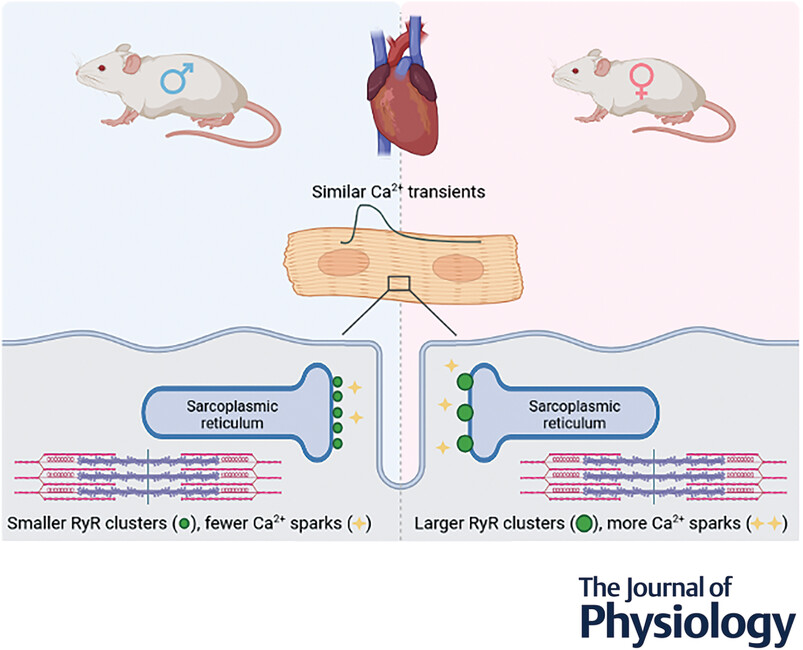Martin Laasmaa, Jelena Branovets, Jekaterina Stolova, Xin Shen, Triinu Rätsepso, Mihkel Jaan Balodis, Cärolin Grahv, Eliise Hendrikson, William Edward Louch, Rikke Birkedal, Marko Vendelin
The Journal of Physiology, 601(18), 4033–4052
- PMID: 37561554
- DOI: 10.1113/JP284515

Abstract
Sex differences in cardiac physiology are receiving increased attention as it has become clear that men and women have different aetiologies of cardiac disease and require different treatments. There are experimental data suggesting that male cardiomyocytes exhibit larger Ca2+ transients due to larger Ca2+ sparks and a higher excitation-contraction coupling gain; in addition, they exhibit a larger response to adrenergic stimulation with isoprenaline (ISO). Here, we studied whether there are sex differences relating to structural organization of the transverse tubular network and ryanodine receptors (RyRs). Surprisingly, we found that female cardiomyocytes exhibited a higher spark frequency in a range of spark magnitudes. While overall RyR expression and phosphorylation were the same, female cardiomyocytes had larger but fewer RyR clusters. The density of transverse t-tubules was the same, but male cardiomyocytes had more longitudinal t-tubules. The Ca2+ transients were similar in male and female cardiomyocytes under control conditions and in the presence of ISO. The synchrony of the Ca2+ transients was similar between sexes as well. Overall, our data suggest subtle sex differences in the Ca2+ influx and efflux pathways and their response to ISO, but these differences are balanced, resulting in similar Ca2+ transients in field-stimulated male and female cardiomyocytes. The higher spark frequency in female cardiomyocytes is related to the organization of RyRs into larger, but fewer clusters. KEY POINTS: During a heartbeat, the force of contraction depends on the amplitude of the calcium transient, which in turn depends on the amount of calcium released as calcium sparks through ryanodine receptors in the sarcoplasmic reticulum. Previous studies suggest that cardiomyocytes from male compared to female mice exhibit larger calcium sparks, larger sarcoplasmic reticulum calcium release and greater response to adrenergic stimulation triggering a fight-or-flight response. In contrast, we show that cardiomyocytes from female mice have a higher spark frequency during adrenergic stimulation and similar spark morphology. The higher spark frequency is related to the organization of ryanodine receptors into fewer, but larger clusters in female compared to male mouse cardiomyocytes. Despite subtle sex differences in cardiomyocyte structure and calcium fluxes, the differences are balanced, leading to similar calcium transients in cardiomyocytes from male and female mice.
Keywords: calcium dynamics; excitation-contraction coupling; heart; sex differences.